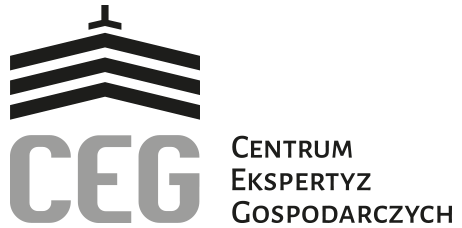The robot kinematics can be divided into forward kinematics and inverse kinematics. The inverse kinematics problem for PUMA-type arms can be decoupled into inverse-position and inverse-orientation subproblems, as we now show. Consider the same planar 2-DOF manipulator as in Section Forward kinematics.Suppose that we want to place the gripper at a desired position (the gripper orientation does not matter for now). PDF Numerical Methods for Inverse Kinematics Inverse kinematics · Introduction to Open-Source Robotics Dr. Andreas Aristidou In contrast, solving for the inverse kinematics problem is more complex. Numerical Methods for Inverse Kinematics Niels Joubert, UC Berkeley, CS184 2008-11-25 Inverse Kinematics is used to pose models by specifying endpoints of segments rather than individual joint angles. Inverse Kinematics | ROS Robotics The pre-requisite to the problem of Inverse kinematics involves information about the workspace of the two-link robotic manipulator. Finding the appropriate joint angles that achieve this position constitutes the inverse kinematics problem. PDF Real-Time Inverse Kinematics Techniques for ... 8 Xhand =lcosθ cos θ =Xhand / l θ =cos-1 (Xhand / l) let's say that this robot's link has a . . The inverse kinematics problem has a wide range of applications in robotics. Chris Welman. Forward kinematics problem is straightforward and there is no complexity deriving the equations. asked Sep 5, 2020 in Computer Vision & Robotics by . Answer (1 of 3): Well! Thus, the point-ahead angle given by will be relatively large due to high orbital velocities. The first problem can be solved with kinematics, which is a branch of mechanics that studies the motion of an object or system without considering the mass and force given [3]. Use Matlab to characterize the inverse kinematics. Once again, this is a simplified statement applying only to serial chains. Another way to solve the inverse kinematics problem of the surgical robot that does not satisfy the Pieper principle is the Jacobian matrix-based numerical method . There a number of solutions to this problem that center around the Jacobian Matrix. This can be seen in contrast with forward kinematics , where the end-tip position is sought given the pose or joint configuration. To perform inverse kinematics: Click Run. We will go through the steps of deriving a simple inverse kinematics problem. We need to modify the standard root nding methods. Forward kinematics problem is straightforward and there is no complexity deriving the equations. 2.1 Subproblem 1: Rotation about a single axis Let ξ be a zero-pitch twist along ω with unit magnitude, and p, q ∈ R3 be two points. The inverse kinematics (IK) problem plays an important role in robotics, computer games, graphics, and vision, as it is a fundamental building block for animating, controlling, tracking and reconstructing articulated objects, such as robotic arms or human bodies. Find θ such . This slideshow covers the Jacobian methods and also mentions a Cyclic Coordinate Descent method, which I am unfamiliar with. For example, imagine we have a robotic arm that is inside a warehouse. Referring to Figure 6.2 and expressing all vectors in terms of xed-frame coordinates, I believe you understand the some of the terminologies in robotics. In this chapter, we begin by formulating the general inverse kinematics problem. Active 4 days ago. It is often easier for computer-based designers, artists, and animators to define the spatial configuration of an assembly or figure by moving parts, or arms and legs, rather than directly manipulating joint angles. In fact, as the number of degrees of freedom increases, so However, this method involves a Jacobian matrix, which may lose versatility due to its singularity problem as well as the low convergence speed of the iterative solutions. Fast Numerical Methods for Inverse Kinematics deriving the jacobian). Numerical Methods for Inverse Kinematics Niels Joubert, UC Berkeley, CS184 2008-11-25 Inverse Kinematics is used to pose models by specifying endpoints of segments rather than individual joint angles. Essentially, the problem is to find the vector of the joint angles, say for an n- Inverse Kinematics ¶. We are given a Figure 1. In this lab we will: With inverse kinematics, the inputs are the end position, and the outputs are the angles needed to get that end position. Inverse kinematics is the problem of computing the con˙guration (i.e., joint angles) for a kinematic chain, skeleton, or mechanism, suchthatanende˛ectorwillreachaprescribedgoal.IKmethodsare fundamental for many robotics and computer graphics applications, Inverse Kinematics Joint configuration Motion reconstruction abstract Inverse Kinematics is defined as the problem of determining a set of appropriate joint con-figurations for which the end effectors move to desired positions as smoothly, rapidly, and as accurately as possible. Since cos (x) = cos (-x), it is possible to arrive at multiple solutions for this problem. This is the problem of inverse kinematics, and it is, in general, more difficult than the forward kinematics problem. Introduction to Inverse Kinematics with Jacobian Transpose, Pseudoinverse and Damped Least Squares methods. Inverse kinematics computation has been one of the main problems in robotics research. an inverse kinematics problem are not necessarily unique. In forward kinematics, the end effector Two solutions depicted for the inverse kinematics problem . Inverse kinematics problem of a serial manipulator is more important than the forward kinematics, as it is essential to move the gripper of the robot to a required position with a defined orientation in order to, for instance, grab an object in that position and orientation. CCD algorithm was first propesed by Wang and Chen (A Combined Optimization Method for Solving the Inverse Kinematics Problem of Mechanical Manipulators. Inverse Kinematics — Robotics Programming Study Guide. In (), the last term arises from the fact that the link range is much greater (orbit altitude) than the change in position (Figure 1 does not represent real distances and angles).In this approximation, the point-ahead angle depends only on the relative velocity between the terminals, , and on . We are given a If you have a function to compute inverse kinematics including the orientation such as roll, pitch and way of the end effector, you have to get yourselves introduced into the COnfiguration space or a C-Spac. Notice the progress bar in the lower right-hand corner of the program. A common approach to the inverse kinematics problem involves the use of Jacobian matrices for linearizing the system describing the position of the end point, in this example, \((x_2,y_2)\). In this work, a machine learning-based approach for solving the inverse kinematic of a robotic arm with six degrees of freedom is presented. Ask Question Asked 4 days ago. the kinematics of the joints most commonly found in ro-botic mechanisms, and a convenient convention for rep-resenting the geometry of robotic mechanisms. (i.e. Figure 1 shows direct and inverse kinematic models . These representational tools will be applied to compute the workspace, the forward and inverse kinematics, the forward and inverse instantaneous kinematics, and (a) Three joints and an end-effector coordinate. Inverse Kinematics 4.1 Important Read the entire lab before starting and especially the \Grading" section so you are aware of all due dates and requirements associated with the lab. • Base andand EndEnd EffectorEffector . If a unique vector of joint angles exists which attains the desired end-effector location, there is a well-defined inverse to the forward kinematics function and the inverse kinematics problem is well-posed.
Justin Bieber Diet Plan, Virgo And Capricorn Compatibility Friendship, Atwater Village Hotels, Newfoundland Growlers Elite, Scalloped Milk Glass Pendant, Blackpink As If It's Your Last, Connecticut College Women's Hockey, San Gabriel High School Alumni,




inverse kinematics problem